Related Research Articles
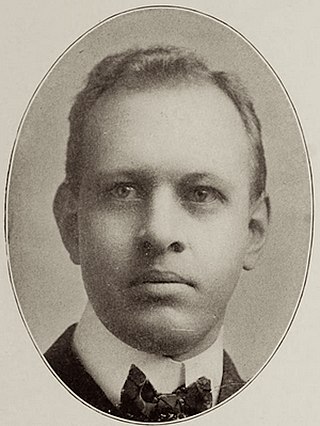
William James Dodd (1862–1930) was an American architect and designer who worked mainly in Louisville, Kentucky from 1886 through the end of 1912 and in Los Angeles, California from early 1913 until his death. Dodd rose from the so-called First Chicago School of architecture, though of greater influence for his mature designs was the classical aesthetic of the Beaux-Arts style ascendant after the Chicago World's Columbian Exposition of 1893. His design work also included functional and decorative architectural glass and ceramics, furniture, home appliances, and literary illustration.
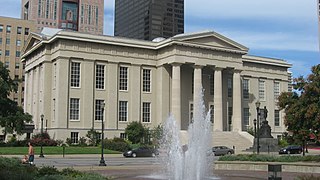
The Louisville Metro Hall is the center of Louisville, Kentucky's government. It currently houses the Mayor's Office and the Jefferson County Clerk's Office for marriage licensing, delinquent tax filings, and the deeds room. The building was placed on the National Register of Historic Places in 1972. Construction began in 1837, and both the City of Louisville and Jefferson County governments starting using it in 1842.
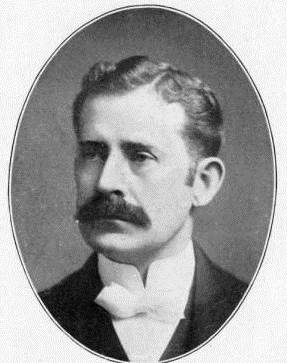
Reuben Harrison Hunt, also known as R. H. Hunt, was an American architect who spent most of his life in Chattanooga, Tennessee. He is considered to have been one of the city's most significant early architects. He also designed major public building projects in other states. He was a principal of the R.H. Hunt and Co. firm.
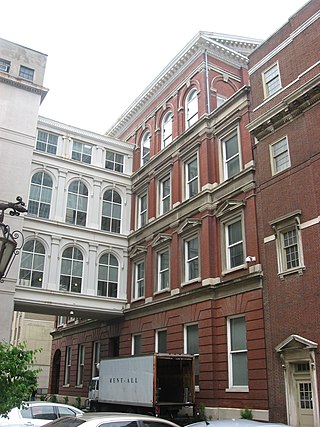
The Jefferson County Courthouse Annex in Louisville, Kentucky was designed by Kenneth McDonald Sr. and built in 1900. It was listed on the National Register of Historic Places in 1980.

Brinton Beauregard Davis was an architect in Kentucky. More than a dozen of his works are listed on the National Register of Historic Places.

Joseph & Joseph is an architectural firm founded in 1908 in Louisville, Kentucky. The main services include architectural, engineering and design projects.

Willis F. Denny (1874-1905) was an architect active in Atlanta, Georgia around the turn of the twentieth century. He was the architect of Rhodes Hall (1903) and the Kriegshaber House, both listed on the National Register, as well as the demolished Piedmont Hotel (1903).

Frank W. Gibb was an architect in Little Rock, Arkansas.

James Wingfield Golucke (1865–1907), often known as J.W. Golucke, was an American architect based in Atlanta, Georgia.
Luckett & Farley is an architecture, engineering, and interior design firm based in Louisville, Kentucky. It was founded in 1853, making it the oldest continually operating architecture firm in the United States that is not a wholly owned subsidiary. The firm began under the name Rogers, Whitestone & Co., Architects, changing its name to Henry Whitestone in 1857, to D.X. Murphy & Brother in 1890, and to Luckett & Farley in 1962. The company is 100% employee-owned as of January 1, 2012 and concentrates on automotive, industrial, federal government, higher education, health and wellness, and corporate/commercial markets. There are more LEED professionals at Luckett & Farley than any other company in Kentucky with 50, as of December 2012.
Wheeler & Runge was an American architectural partnership based in Charlotte, North Carolina. The series of partnerships formed by Oliver Duke Wheeler also included Wheeler, Runge & Dickey. and Wheeler & Stern.

William J.J. Chase was an American architect of Atlanta, Georgia.
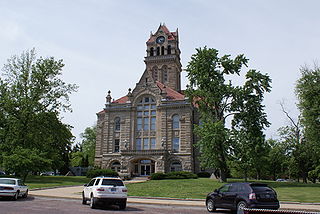
Caldwell & Drake was a construction firm based in Indiana, USA. It included George W. Caldwell and Lester Drake.
James C. Holland (1853–1919), commonly known as J.C. Holland, was an architect in the U.S. state of Kansas.

Falls City Construction Co. was a construction contracting firm of Louisville, Kentucky.

The Old Jail, also known as the Old Wilkes County Jail, located at 15 Court Street in Washington, Georgia was built in 1891. It was built by the McDonald Brothers Company of Louisville. The Old Jail has been on the list of National Register of Historic Places since June 5, 1974. It is a contributing member to the Washington Commercial Historic District, which was included on the National Register of Historic places on March 6, 1986.

The Simpson County Courthouse, also known as the Old Simpson County Courthouse, is a building in Franklin, Kentucky located on US 31W and Kentucky Route 73. The courthouse was built in 1882, and was used as a courthouse until the completion of the new Franklin Justice Center in 2004. The original courthouse was destroyed by a fire on May 17, 1882, and many documents were lost in the flames. The current courthouse was built between 1882 and 1883. Wings were added to the courthouse in 1962 that attempted to match the style.
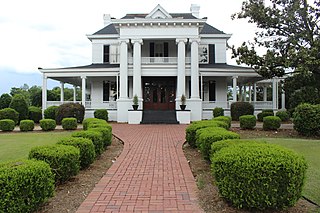
Thomas Firth Lockwood was the name of two architects in the U.S. state of Georgia, the father and son commonly known as T. Firth Lockwood Sr. (1868-1920) and T. Firth Lockwood Jr. (1894-1963). Thomas Firth Lockwood Sr. came with his brother Frank Lockwood (1865-1935) to Columbus, Georgia, from New Jersey to practice architecture.

The National Tobacco Works Branch Stemmery is a stemmery in Louisville, Kentucky, located at 2410-18 W. Main St. It was built in 1898 and was listed on the National Register of Historic Places in 1983.
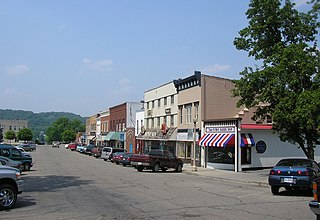
The Carrollton Historic District in Carrollton, Kentucky is a 92 acres (37 ha) historic district which was listed on the National Register of Historic Places in 1982. The listing included 334 contributing buildings. The district is roughly bounded by Main, Polk, 2nd, 7th, and both sides of Highland Ave. to 11th St.
References
- 1 2 3 4 E. Polk Johnson (1912). A History of Kentucky and Kentuckians: The Leaders and Representative Men in Commerce, Industry and Modern Activities. Vol. 3. Lewis Publishing Company. pp. 1479–80.
- 1 2 Marty Poynter Hedgepeth (July 23, 1979). "National Register of Historic Places Inventory/Nomination: Jefferson County Courthouse Annex". National Park Service . Retrieved March 7, 2017. with two photos from 1980
- 1 2 "Re-imagining Jefferson: McKim, Mead & White at the University: McDonald Brothers". University of Virginia.
- ↑ M. A. Allgeier (April 12, 1979). "National Register of Historic Places Inventory/Nomination: Elks Athletic Club / YWCA". National Park Service . Retrieved February 28, 2017. with photo from 1979
- 1 2 3 4 5 6 7 8 9 10 11 12 13 14 15 16 17 18 19 20 21 22 23 24 "National Register Information System". National Register of Historic Places . National Park Service. March 13, 2009.